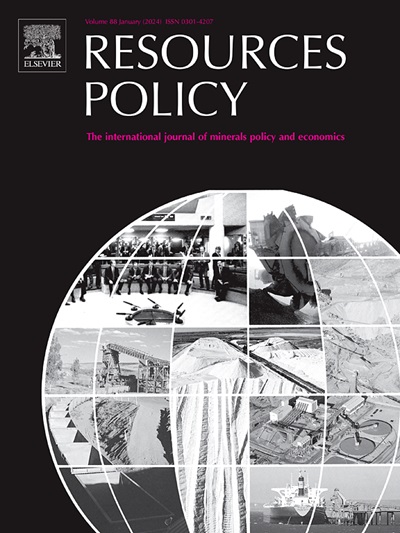Mining-induced displacement and livelihood restoration: A data-driven approach
IF 10.2
2区 经济学
0 ENVIRONMENTAL STUDIES
引用次数: 0
Abstract
Mining-induced displacement and loss of livelihood assets are extreme social impacts that affect host communities. This research directly addresses the challenges faced by displaced subsistence farmers who must secure alternative agricultural land to rebuild their livelihoods by exploring how the resources of the mining project can be leveraged to help these farmers identify suitable arable land. The study demonstrates how data collected during mining exploration can be repurposed to assess the agricultural potential of nearby land, and effective ways to communicate this information to affected farmers. The research introduces a data-driven land evaluation approach that contrasts with traditional expert-dependent methods. Using a case study in Burkina Faso, maximum entropy modelling (MaxEnt) is applied to identify suitable land for locally grown crops by integrating crop planting locations from community land use maps—originally produced for compensation assessments—with environmental data. The mining exploration data were successfully combined with publicly available datasets using free and open-source software to generate crop suitability maps that were then tailored for illiterate and semi-literate users. The findings highlight how mining exploration data and spatial technologies can support agricultural planning and aid displaced farmers in securing better agricultural outcomes. The method is transferable to diverse environments and agricultural systems and is particularly suited to mining applications in developing countries where detailed agricultural data is collected during environmental and social impact assessments. This scalable and resource-efficient approach provides a valuable tool for enhancing livelihood restoration of farming communities following mining-induced displacement.
求助全文
约1分钟内获得全文
求助全文
来源期刊

Resources Policy
ENVIRONMENTAL STUDIES-
CiteScore
13.40
自引率
23.50%
发文量
602
审稿时长
69 days
期刊介绍:
Resources Policy is an international journal focused on the economics and policy aspects of mineral and fossil fuel extraction, production, and utilization. It targets individuals in academia, government, and industry. The journal seeks original research submissions analyzing public policy, economics, social science, geography, and finance in the fields of mining, non-fuel minerals, energy minerals, fossil fuels, and metals. Mineral economics topics covered include mineral market analysis, price analysis, project evaluation, mining and sustainable development, mineral resource rents, resource curse, mineral wealth and corruption, mineral taxation and regulation, strategic minerals and their supply, and the impact of mineral development on local communities and indigenous populations. The journal specifically excludes papers with agriculture, forestry, or fisheries as their primary focus.
 求助内容:
求助内容: 应助结果提醒方式:
应助结果提醒方式:


